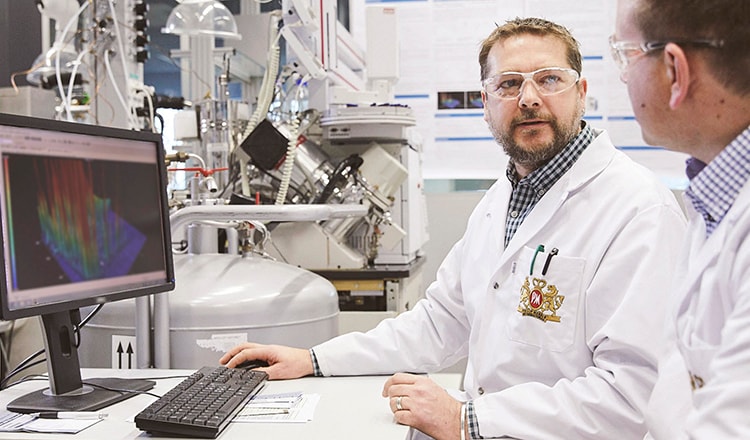By offering better alternatives to adults who would otherwise continue to smoke, Philip Morris International (PMI) can help accelerate the delivery of a smoke-free future and make a significant contribution to public health.
To achieve this, after rigorous pre-clinical studies, it’s vital to demonstrate through studies in humans that smoke-free products can significantly reduce the risks and harms of smoking-related diseases.
This research is led by Dr. Patrick Picavet, Chief Medical Officer at PMI. Here are his answers to key questions in these areas, and the potential consequences of regulators not applying tobacco harm reduction policies.
Can you define the difference between clinical and real-world studies?
Clinical studies generate data in a controlled way, while real-world evidence uses and analyzes existing data, such as electronic health records or medical claims data.
To add a little detail, clinical studies are controlled studies where people consenting to participate in a study would, for example, be randomized to a study arm and where we then measure the difference between continuing to use cigarettes, switching completely to our smoke-free product, and quitting all products containing nicotine and tobacco for the duration of the study.
Real-world evidence studies analyze existing data and/or follow and observe users through their lives to understand the potential impact of smoke-free products in the real-world.
Ultimately, we are aiming to understand through clinical studies and real-world data how users of smoke-free products feel (symptoms) and function (activity), and whether they live healthier lives compared to smokers (survival/mortality). This is called “direct clinical benefit.”
However, I have to note one important point here: Real-world evidence studies have many inherent limitations and are not designed to assess cause and effect, but can serve as an important element of the scientific evidence package supporting the role of smoke-free products in tobacco harm reduction approaches.
How can those outside of PMI trust these results?
In short, you don’t have to trust us—you can look at the data objectively and evaluate the results for yourselves.
What should provide strong confidence is that the way we conduct our research is based on the standards used in the pharmaceutical industry. It is reviewed, audited, and made publicly available by regulators such as the U.S. Food and Drug Administration (FDA), and we publish our study protocols and results in peer-reviewed journals.
However, more and more scientific and medical journals reject or refuse to publish our research solely on the grounds that we are a tobacco company. This is a concerning trend and does require a sincere and serious public debate, as being able to publish in peer-reviewed journals is a key control measure to ensure high-quality scientific research.
To me, it is a contradiction to say, “We don’t trust science from the industry,” and at the same time deny us the opportunity to discuss our science through the highest-quality scientific publication standard—peer-reviewed journals. It is exactly for this reason that we will keep working with scientific journals to offer our findings for peer review.
Based on your own expertise and understanding of our smoke-free products, what do you expect the results of our real-world evidence and clinical studies to show over the coming years?
In science, conclusions are based on data and not on expectation or what we believe or hope to see. Our aim is to demonstrate that our smoke-free products offer direct clinical benefit to adult smokers who switch completely, abandoning cigarettes for good.
Direct clinical benefit means that we can demonstrate that users of smoke-free products feel (symptoms) and function (activity) better, and live healthier lives compared to smokers (disease/mortality). What we know today is that the data available to date strongly indicates the health harm reduction potential of our smoke-free products and that, for example, the U.S. FDA considers one of our heated tobacco products “as appropriate for the protection of public health compared to cigarettes.”
Our aim is to demonstrate that our smoke-free products offer direct clinical benefit to adult smokers who switch completely, abandoning cigarettes for good.
Can real-world evidence expose the consequences of inaction by governments who refuse to acknowledge or embrace the merits of tobacco harm reduction?
While this type of analysis has its own limitations, it can supplement pre-clinical and clinical studies and, in the absence of epidemiological studies (which take much more time to develop), can provide a good indication of the potential impact of inaction.
An indication of the direct human health benefit of smoke-free products can be seen from the use of oral tobacco products compared to cigarettes in Sweden. In Sweden, sales of cigarettes were on the rise till about 1980, and since then smoking prevalence has been declining from about 35 percent in 1980 to about six percent today. Sales of oral products have increased since the first launch of pouched snus in 1973 and tobacco-free nicotine pouches in 2016, and have overtaken cigarettes lately.
At the same time, there has been a reduction in ischemic heart disease and in lung cancer in Swedish men. Overall, Swedish males have one of the lowest rates of tobacco-related mortality among the EU countries.
There are enough data available for taking pragmatic actions to reduce cigarette use, and there are costs to human health of regulatory inactions. Encouraging progress is being made in many countries, but a failure to acknowledge the role that tobacco harm reduction can play in ending cigarette use hinders the ability of adult smokers to switch to better alternatives.
Some people won’t have heard of “real-world evidence.” Is this approach unique to PMI or do health organizations also use it?
Real-world data and real-world evidence are well-established methodologies in public health.
For example, the 2010 Report of the Surgeon General in the U.S. looked at hospitalizations for heart attacks in Pueblo, Colorado following a public smoking ban in July 2003. It found that heart attacks dropped 41 percent in three years, from 257 to 152 per 100,000. 1
1 A Report of the Surgeon General; How Tobacco Smoke Causes Disease - What it means to you (page 9)
PMI’s clear message is: If you don’t smoke, don’t start. If you smoke, quit. If you don’t quit, change. Do your studies replicate this by covering non-smokers, smokers, quitters, and those who’ve changed to a smoke-free product?
In our controlled clinical studies, yes, we have three so-called study arms: people who continue smoking, people who quit cigarettes and nicotine completely, and people who change to a smoke-free product.
In retrospective real-world evidence studies—i.e., studies analyzing already available data—this is a bit more difficult as we often have only limited information about what product people are using, as product use is often not tracked reliably in electronic records or medical claims databases.
However, in instances this data does exist, we do, of course, use it. In other instances, where it’s feasible, we can ask the people in these databases if they are willing to answer a questionnaire about what tobacco and nicotine products they’ve been using. Once we know about their actions, we can go back to the databases to assess what effect these actions have had on them.
In addition to these studies with data already available, we are designing studies to be conducted in the “real-world,” collecting data from smokers, people who quit smoking, and heated tobacco product users prospectively—in other words, as time goes by.
We are working on this now, as it will allow us to dive much deeper into the data and assess the impact that our products are having on humans compared to cigarette smoking.
Because real-world evidence comes from data in the real world and not from a clinical study where you control things in quite a robust way, how can you be sure that other factors aren’t at least partially responsible for the results?
Having less control is inherent to real-world evidence. But the advantage is that you’re looking at real people in society.
If you know when you have introduced an intervention—such as a smoke-free product that has been taken up by a significant proportion of the population and, subsequently, you ascertain which products they have used and for how long—real-world evidence can be a powerful tool to help you measure the impact of that intervention. Of course, by observing the effects in real-life conditions, it could be that the characteristics of users differed, such as age, gender, lifestyle, and morbidity. Other changes may also have been introduced into the market over time—for example, new medication schemes, policies, legal changes, etc. Some statistical techniques can then be applied to the observed data, such as balancing population through “propensity scoring.”





